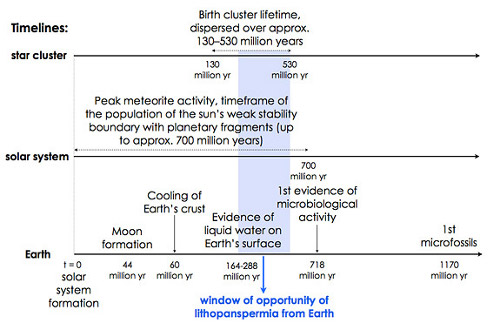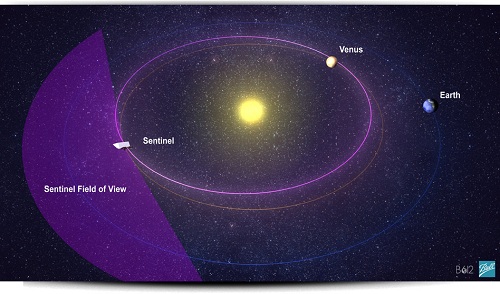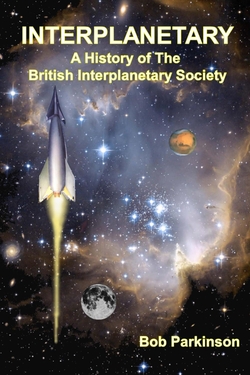Centauri Dreams
Imagining and Planning Interstellar Exploration
Pluto, Charon and Kepler

Our view of Pluto/Charon gets better and better as we prepare for the New Horizons flyby in 2015. It wasn’t so long ago that we had no idea Pluto had a single moon, much less the five we have so far identified. When James Christy (USNO) discovered Charon in 1978, he was looking at photographic plates of Pluto that showed little more than a slight bulge that appeared periodically. The bulge came into and out of view as the [dwarf] planet rotated, indicating a genuine object and not a flaw in the observation, but although Charon had been found, we couldn’t resolve separate disks until the Hubble Space Telescope’s images of the 1990s.
Image: Plates taken with the Kaj Strand Astrometric Reflector at the USNO Flagstaff Station in Arizona revealed the existence of Charon, visible as an elongation in the image. Later eclipses and occultations of Pluto and Charon confirmed the discovery. Charon has a mass of about 22 percent that of Pluto. Credit: Wikimedia Commons.
The Hubble images, unlimited by distortions from Earth’s atmosphere, have revealed much about Pluto/Charon. But take a look at another image, this one taken with the Gemini North 8-meter instrument. This is said to be the sharpest ground-based imagery of Pluto/Charon ever taken in visible light. These observations have not only verified the orbital characteristics of the two objects but are sharp enough to reveal their precise diameters. Steve Howell (NASA Ames), who led the study, says “The Pluto-Charon result is of timely interest to those of us wanting to understand the orbital dynamics of this pair for the 2015 encounter by NASA’s New Horizons spacecraft.”

The technique being used here is called reconstructive speckle imaging, made possible through mounting a camera called the Differential Speckle Survey Instrument (DSSI) onto the telescope. Using these methods, a large number of short exposure images are processed to remove the effects of atmospheric distortion. Each image was exposed for 60 milliseconds. Over the range of images, the light from the objects under observation could be separated from the transient artifacts caused by the atmosphere. The DSSI instrument and associated software were created by Elliott Horch (Southern Connecticut State University) and team in 2007. Detectors for the instrument were upgraded in late 2009, making possible the new levels of sensitivity shown here.
Image: Speckle image reconstruction of Pluto and Charon obtained in visible light at 692 nanometers (red) with the Gemini North 8-meter telescope using the Differential Speckle Survey Instrument (DSSI). Resolution of the image is about 20 milliarcseconds rms [root mean square]. This is the first speckle reconstructed image for Pluto and Charon from which astronomers obtained not only the separation and position angle for Charon, but also the diameters of the two bodies. North is up, east is to the left, and the image section shown here is 1.39 arcseconds across. Credit: Gemini Observatory/NSF/NASA/AURA.
Reconstructive speckle imaging is showing its stuff with Pluto/Charon, but the bigger picture is that the upgraded DSSI can be used in the exoplanet hunt. Kepler’s transit studies require follow-ups from other instruments to confirm the discoveries, and the original DSSI had been in use at Kitt Peak for this purpose. NASA’s Howell says that speckle imaging with the Gemini telescope will double the instrument’s ability to resolve objects, offering a 3- to 4- magnitude sensitivity increase for the sources the team needs to observe. The astronomer calls it “an enormous gain in the effort underway to confirm small Earth-size planets.”

Life-Bearing Rocks in Slow Motion
I’ve been fascinated with Edward Belbruno’s work on ‘chaotic orbits’ ever since meeting him at an astrodynamics conference in Princeton some years back. The idea is to develop low-energy routes for spacecraft by analyzing so-called ‘weak stability boundaries,’ regions where motion is highly sensitive and small changes can create gradual orbital change. A low-energy route was what Belbruno used in 1991 to help the Japanese spacecraft Hiten reach the Moon using almost no fuel, a proof of concept about which the physicist said “It saved the spacecraft, and it saved my career.”

That comment came from a lecture to the Mathematical Association of America in 2009 that you can listen to here. It’s fascinating in its own right, but doubly so since Belbruno is back in the news with new findings on the idea of panspermia, and specifically that version of panspermia called lithopanspermia. In this hypothesis, elemental life forms are distributed between stars in planetary fragments created by asteroid impacts, volcanic eruptions and other disruptive events. Drifting through space, the fragments are eventually caught in another solar system’s gravity, some of them conceivably falling on worlds in the habitable zone of their star.
Image: The Sun is thought to have formed in a cluster of other stars around 4.5 billion years ago. Newly born star clusters like Pismis 24 (pictured) may be similar to the environment in which the Sun spent in its early years. Much closer to its neighbours than it is now, the nascent Solar System probably exchanged material with other planetary systems, and it is possible that early life could have spread between these neighbouring planetary systems. Credit: NASA, ESA and Jesús Maíz Apellániz (Instituto de Astrofísica de Andalucía, Spain).
Could something like this have caused life to begin on Earth? Belbruno’s work, with Amaya Moro-Martín (Centro de Astrobiología and Princeton University) and Renu Malhotra (University of Arizona) simulates conditions when the Sun was young and still a part of the cluster that gave it birth. Using simulations performed by Princeton graduate student Dmitry Savransky, the researchers applied the theory behind chaotic orbits and in particular the idea of ‘weak transfer,’ which they believe offers rocky fragments moving at low velocities a high probability of moving between close stars. In fact, they believe our system could have exchanged materials with its nearest planetary system neighbor 100 trillion times before the Sun left its native cluster.
“The conclusion from our work,” Moro-Martín says, “is that the weak transfer mechanism makes lithopanspermia a viable hypothesis because it would have allowed large quantities of solid material to be exchanged between planetary systems, and involves timescales that could potentially allow the survival of microorganisms embedded in large boulders.”
Moro-Martin adds that the work does not prove lithopanspermia actually happened, but indicates it is an open possibility, with further study needed into the question of rocky materials landing on a terrestrial planet. Could life have arisen on Earth before the dispersal of the cluster? The authors believe that it could, assuming life arose shortly after there is evidence of liquid water on its crust. From the paper on this work:
Within this timeframe, there was a mechanism that allowed large quantities of rocks to be ejected from the Earth: the ejection of material resulting from the impacts at Earth during the heavy bombardment of the inner solar system. This bombardment period lasted from the end of the planet accretion phase until the end of the LHB 3.8 Ga, i.e. it finished when the solar system was approximately 770 Myr old (Tera et al. 1974; Mojzsis et al. 2001; Strom et al. 2005). It represents evidence that planetesimals were being cleared from the solar system several hundred million years after planet formation (Strom et al. 2005; Tsiganis et al. 2005; Chapman et al. 2007). This period of massive bombardment and planetesimal clearing encompassed completely the “window of opportunity” for the transfer of life-bearing rocks discussed above and therefore provides a viable ejection mechanism that may have led to weak transfer.

Image: The researchers suggest that ideal conditions for lithopanspermia in the sun’s birth cluster, in the solar system and on Earth overlapped for several hundred million years (blue shaded area). Rock evidence suggests that the Earth (bottom line) contained surface water during a period when the relative velocities between the sun and its closest cluster neighbors (top line) were small enough to allow weak transfer to other planetary systems, and when the solar system (middle line) experienced high meteorite activity within the sun’s weak gravitational boundary. If life arose on Earth shortly after surface water was available, life could have journeyed from Earth to another habitable world during this time, or vice versa if life had an early start in another planetary system. Credit: Amaya Moro-Martín.
Back in 2005, David Spergel (Princeton) and Fred Adams (University of Michigan) studied binary stars in young clusters. They found that the chances of life-bearing rocks being exchanged between star systems ranged from one in a million to one in a thousand, depending on the scenario invoked. Of the new work, Adams says:
“This paper takes the type of calculations that have been done before and makes an important generalization of previous work. Their work on chaos in this context also carries the subject forward. They make a careful assessment of a process that is dynamically quite complicated and chaotic in nature. They are breaking new ground from the viewpoint of dynamical astrophysics. Regarding the problem of lithopanspermia, this type of weak capture and weak escape is interesting because it allows for the ejection speeds to be small, and these slow speeds allow for higher probabilities of rock capture. To say it another way, chaos, in part, enhances the prospects for lithopanspermia.”
The paper is Belbruno et al., “Chaotic Exchange of Solid Material between Planetary Systems: Implications for Lithopanspermia,” published September 12 in Astrobiology (preprint). The Spergel and Adams paper is “Lithopanspermia in Star Forming Clusters,” Astrobiology Vol. 5, No. 4 (2005). Preprint available. This Princeton news release contains details about the simulations used in the Belbruno study.

The Billion Year Plan
At the 100 Year Starship Symposium in Houson, I sent out a large number of tweets as @centauri_dreams. That Twitter account is still live, but be aware that my son Miles, who is now working actively with us, has set up a new account solely for the Tau Zero Foundation. You can access @TZFoundation to pick up interesting links and news of the interstellar community. I suspect, for example, that when Miles runs across articles like the one I’m going to be discussing today, they’ll appear on Twitter, but he’s bound to find a lot of good material that I miss.
Yesterday we were looking at distance issues as Larry Klaes discussed the extension of Ithaca, NY’s Sagan Planet Walk all the way to Hawaii, where a new ‘station’ represents Alpha Centauri. Matters of scale are important to convey to the public because getting across the distances involved in interstellar flight is tricky, and various ways of modeling them can provide the needed perspective. Peter Garretson thinks about scale as well, but in What Our Civilization Needs Is a Billion Year Plan, a new piece on the Kurzweil Accelerating Intelligence blog, he attacks the issue in terms of time. And actually he ranges a good deal beyond the billion years mentioned in the title.
Lt. Col. Garretson has been thinking about futuristic issues for a long time. He’s a space advocate who serves as Chief of Future Science and Technology Exploration for Headquarters Air Force, a man who has written widely on issues ranging from planetary defense to space solar power, and in a number of white papers he has discussed investment strategies for high risk/high return technologies and lunar development. In the Kurzweil piece, he picks up on a presentation originally made at the International Space Development Conference last year.

Image: An imagined far future as a Kardashev Type II civilization exploits its system to enclose its star in a Dyson sphere. Credit: Adam Burn.
Usually when I talk about a ‘long-term’ strategy, I’m looking centuries and conceivably a millennium ahead, but Garretson takes us to the death of the Sun and beyond. And in the interim, he’s suggesting that we should be planning for a future in space that begins with O’Neill-style space colonies constructed out of materials in the asteroid belt, ultimately enough to support between 10 and 100 trillion humans (links to the sources for these numbers are provided in the text). Key to the short-term plan, which could itself take centuries, is the need for energy. He considers fossil fuels a kind of ‘baby fat’ for the Earth to use in growing to adolescence, saying that spacefaring and new energy sources will have to be developed before we run out of this ‘easy’ energy and lose the energy capital we need to create the crucial precursor technologies.
Even so, abundant future energy doesn’t mean we can stay on Earth forever:
The case where we transcend a fossil fuel crisis is just as compelling. If we succeed in continuing our population and development growth and find new energy sources, and assuming energy use (including all sources: fossil, nuclear, fusion, etc.) grows at annual rate of 2.3% (reduced from the current 2.9% to be more realistic), we’d only be able to continue growth on Earth for another 420 years before we could not maintain the heat balance of the planet, and started boiling the oceans ourselves.
Imagine a future Earth ringed by solar power satellites maintaining a population of some 10 billion or so in relative prosperity, its needs met by 40-50 TW of total electrical energy. It could be a green and prosperous place, but the vision Garretson suggests is of a place that might quickly become something of a backwater as a spacefaring civilization grows up to 10,000 times more populous. This is a lively essay, profusely illustrated, pointing ahead to Kardashev Type 2 — where the total energy of the Sun could be exploited — and into a still more speculative future beyond.
Interstellar flight plays a major role in Garretson scenarios, and he’s generous in mentioning not only our Frontiers of Propulsion Science text (edited by Marc Millis and Eric Davis and published by the AIAA in 2009), but also the 100 Year Starship organization, the prior work of the Breakthrough Propulsion Physics project run by Millis at Glenn Research Center in Cleveland, and the Tau Zero Foundation. Icarus Interstellar should make an appearance here as well, and I suspect a future iteration of this presentation will include the ongoing re-design of the British Interplanetary Society’s Daedalus starship, now under the capable leadership of Pat Galea.
I won’t go through all the future possibilities Garretson examines — you’ll want to read the essay yourself, where you’ll find speculations going as far ahead as the ‘degenerate era’ some 1014 to 1040 years from now. But drivers for a bolder space program in our own time also make an appearance, including severe damage and even mass extinctions caused by asteroids. An asteroid mining infrastructure, which we may be seeing the first steps toward through organizations like Planetary Resources, will ultimately develop the best methods for asteroid deflection, an early priority for a civilization spreading out into the Solar System.
Along the way there is a healthy jolt of inspiration:
Many look at the significant events discussed above as “doomsday scenarios,” but to me, they are just eventualities to be planned for, and chance favors the prepared mind. It’s also a happy consequence that the farther out you look for problems, and the bigger problems you try to tackle, the more likely you are to perceive and be able to bring ambitious thinking to more proximate problems.
If we had not been building instruments in space to look far out into space, we would not even know about the threats of asteroids, comets, gamma-ray-bursts or galactic collisions. We also would not have the space-based surveillance to know about the hurricane or tsunami on its way. Lifting our eyes to the horizon pays.
Of course, there are more proximate threats, and several of our own creation. But personally, I bet on humanity, not against humanity. We are the life carriers, the intelligence, and the gametes of Gaia. It is our destiny to spread not just human life, but the entire clan of life, and intelligence, first to the Solar System, and then to the stars.
Garretson is a man of sweeping concepts, and in that sense he picks up on the same kind of optimism about space that used to infuse our culture in the period before the first moon landings, the breathtaking notions that Chesley Bonestell illustrated for Collier’s and Wernher von Braun advanced as what seemed to be a sure path to Mars. Much has changed in the days since, but we need the deeply imaginative vision to reawaken a public sense of awe over our possibilities in the cosmos. All this is a tough sell in our time, but Garretson knows it’s worth trying. Being bold can help open minds and launch careers that will matter down the line.

To Alpha Centauri via Hawai’i
I’m always looking for ways to relate interstellar distances to common objects on Earth, knowing that misunderstandings about the vast scale of the universe are common. Sir John Herschel (1792-1871) talked about dropping a pea off the side of a ship after every mile on an ocean voyage the distance of the nearest star, telling his readers that it would require ‘a fleet of 10,000 ships of 600 tons burthen, each starting with a full cargo of peas.’ Herschel was the first to try to measure the distance to Alpha Centauri, and while his numbers weren’t as accurate as ours, he captured for his era the disconnect between Earthly distances and the heavens. Larry Klaes weighs in this morning with yet another way to study the issue, using an exhibition on the interplanetary scale that has now been extended Herschel-style to the ultimate voyage.
By Larry Klaes
Since its dedication in 1997, the Sagan Planet Walk has become a landmark feature of downtown Ithaca, New York. The various monuments, or “stations”, representing the major places in the Solar System from the Sun to Pluto serve first as a memorial to the late Cornell astronomer and science popularizer Carl Sagan. Perhaps best known for his Cosmos television series which premiered on PBS in 1980, Sagan passed away in December of 1996 at the age of 62 after two decades of teaching at the university.

The Sagan Planet Walk also serves as a continuing educational tool about our celestial neighborhood. Among its astronomy informational features is the Walk’s physical demonstration of just how far apart objects in our Solar System really are on a scale that the general public can relate to. When reduced from its actual radius of five billion miles, the Solar System’s scale becomes clear in everyday terms. The gray marble Sun station resides prominently in the Ithaca Commons with the planets from Mercury to Mars nearby, while the Pluto station sits just outside the Ithaca Sciencenter nearly one mile away. The Sciencenter is the primary developer of the Sagan Planet Walk.
One question that has often been asked by folks who hiked the Sagan Planet Walk is just how far away the stars nearest to our Sun would be on this scale. The answer is that a station for this feature of the Walk would have to be located in tropical Hawai’i over five thousands miles west of temperate Ithaca. That is how far one would have to travel to reach the representation of our nearest suns, the Alpha Centauri system, which exists 4.3 light years away, or over 25 trillion miles across interstellar space.
Image: The beginning of the Sagan Planet Walk, a gray marble monument symbolizing the Sun. Bring your walking shoes if you’re headed for the Pluto station. Alpha Centauri will require plane tickets. Credit: Andrew Alden.
For the last two years, the Sciencenter has been partnering with Cornell, the University of Hawai’i, and NASA to place an Alpha Centauri station on the Big Island of Hawai?i at the ‘Imiloa Astronomy Center on the Hilo campus of the University of Hawai?i. Lead funding was provided by the NASA Space Grant Program of New York (based at Cornell) and Hawai?i (based at the University of Hawai?i), with additional major funding provided by ?Imiloa and the Sciencenter.
A dedication ceremony to mark this newest and most distant addition to the Sagan Planet Walk will be held on September 28 at the ‘Imiloa Astronomy Center to coincide with the annual Polynesian Voyaging Festival at the hands-on science center, which focuses on astronomy and the culture of Polynesian voyaging. The features of the festival are to include presentations of double-hulled, ocean-going canoes, live demonstrations, and other activities that celebrate the proud heritage associated with centuries of Pacific Ocean crossings without instruments. Among those present at the dedication will be Charlie Trautmann, executive director of the Sciencenter and adjunct professor of engineering at Cornell.
While retaining the basic features common to all the stations of the Sagan Planet Walk – placards with interesting facts and a proportional model of each world that invites visitors “to contemplate the enormous, awe-inspiring scale of the Universe and our place within it” – the Alpha Centauri station also reflects the culture of its surroundings (Kamailehope is the Hawaiian name for Alpha Centauri).
The centerpiece of the exhibition is a large stone Hawaiian figure, sculpted in native Hawaiian volcanic stone by world-renowned Hawaiian artist Rocky Jensen. On either side of this sculpture are four graphic panels which detail the scale of the Solar System in both English and Hawaiian, the connection with the Sagan Planet Walk in Ithaca, and how the Alpha Centauri stars were utilized by Polynesian sailors to cross the Pacific in their open, double-hulled canoes without the need for astronomical tools. Native Hawaiian school children will learn about their heritage and the history of navigation thanks to an eight-foot wide circular star compass which completes the station.

Image: The Alpha Centauri station of the Sagan Planet Walk, fittingly found under Polynesian skies. Credit: Ithaca Sciencenter.
“The inclusion of the Alpha Centauri station has been fifteen years in the making, so we’re excited to see it coming to fruition and completing the Sagan Planet Walk,” said Teresa Smith, Public and Media Relations Manager at the Sciencenter.
The day after the Hawai’i dedication ceremony, the Sciencenter will hold its own celebration of the Sagan Planet Walk expansion to our nearest stellar neighbors by offering a free tour of the Walk, guided by Greg Sloan of Cornell’s Astronomy Department. Tour members will meet up at the Sun station on the Commons and make their way through the Solar System to the Pluto station at the Sciencenter, where prepared Hawaiian refreshments will await.
The newly expanded Sagan Planet Walk is now the largest such exhibition on Earth, measuring five thousand miles from end to end. This eclipses the previous record of 66 miles held by the artwork in the Stockholm, Sweden subway tunnels.

Keeping the Worldship Alive
One of the challenges of explaining why a starship project is worth doing even though its final goal may not be realized for a long time is in showing how this work can have an impact on improving things on Earth. Technological spinoffs have acquired a bad name because of the stigma of Teflon and Tang — NASA hasn’t made the strongest case for how advanced work changes lives (and in any case, Teflon and Tang are not actually NASA spinoffs, though they are in the eyes of the public). But work in space can effect profound changes on Earth, and there is every reason to believe that energy breakthroughs in propulsion and power generation could be highly useful in solving our planet’s future energy demands. [See the comments for a recent change to this text].

The list can obviously be expanded, as in the case of closed ecologies, which we’ve been talking about recently in these pages. A long-duration human mission demands attention to environments and their maintenance that will surely tell us much about preserving Earth’s ecosystems. Now I see that Rachel Armstrong, who works on sustainable environmental solutions using synthetic biology, is developing Project Persephone, an Icarus Interstellar initiative for the 100 Year Starship effort that looks at starship architecture and how it can best protect its inhabitants.
Armstrong is a TED Fellow whose work is multidisciplinary to the core. Indeed, it’s her view that “Scientists need to work outside their own areas of expertise to make new technologies that are pertinent to the 21st century and to collaborate, both with other scientific disciplines and the arts and humanities.” Synthetic biology can be considered the engineering of living systems. In an article for Discovery News, Armstrong explains that a ‘worldship’ — a vast craft that might take centuries or more to carry a human population to the stars — will need to behave as a supple and evolving ecology rather than as the kind of mechanistic system found in modern cities today.
Image: A worldship conceived as a vast cylinder, housing a self-contained ecology that may have to survive for centuries if not longer. A new project examines synthetic biology and sustainable architectures for such an effort. Credit: Adrian Mann.
That means thinking creatively about what the kind of materials we build with and what we ask them to do. Inert materials and industrial methods are what we are familiar with, but it’s Armstrong’s view that these practices create barriers rather than connections:
Perhaps it is possible to use the innate “force” of different kinds of materials to create an artificial nature, which can shape streams of material flow to create a living interior that is capable of regeneration and is not simply waiting to be consumed by its human colony. A material ecology may be feasible if the worldship itself was able to provide an external source of energy, so that the living interior would not be a closed system, but open — as if it had its own (nuclear) sun.
Just as metamaterials hold out the prospect of cheaper and lighter manufacture of large objects like telescope mirrors, synthetic biology may help us work with and adjust the numerous interactions that make up the support structure for a functioning community. Armstrong points to possibilities like using artificial soils and terrestrial micro-biota to seed a worldship’s ecology. Project Persephone will develop technical models that explore such systems and the infrastructures to support them.
Out of this, of course, may well come commercial products that can show us how to make our cities more livable. An ‘ecological architecture’ is one designed to “integrate our megacities with natural ecologies and strive for a new kind of ‘sustainability’ where, through the design of buildings, our civilization can return useful substances back to the environment, as well as consume them.”
Thus the end of the old industrial paradigm in favor of a complex, ecological approach to architecture and community design. A long-haul starship is the perfect experimental vehicle in which to model these concepts, for it’s a closed system that demands we apply the lessons we’ve learned from our own ecology in creating a sustainable living space for generations of crew. The growing interest in these matters is a demonstration of how many issues we’ve overlooked in favor of concentrating on the propulsion dilemma. Yet experiments in closed ecologies and synthetic biology can proceed in the near-term, with a technological spinoff that could quickly demonstrate the value of long-term approaches to basic human needs.
As for the name, Persephone was not only a goddess of the underworld but the goddess of spring growth, worshipped in the ancient world in the initiation ceremonies known as the Eleusinian Mysteries. The cult of Demeter (mother of Persephone) seems to have been in place in Mycenaean Greece if not before, offering its initiates passage to an paradisiacal afterlife. According to the legend, the abduction of Persephone by Hades prompted Demeter to search for her, setting up a reunion that marked the rebirth of plant life and the end of drought. Wrapped up in the Eleusinian mysteries, then, is the secret of the seasons, death and regeneration.
When I think about a starship whose living systems have grown critically out of balance, I think of Brian Aldiss’ Non-Stop, a 1958 novel published in the US as Starship. What appears to be a primitive tribe living a simple farming life turns out to be the descendants of a multi-generational starship crew returning from a planet around Procyon, the ship’s systems largely out of control. The new focus on closed systems and their management should spin off some interesting fiction of its own as the innovative ideas of a living architecture take hold. For more on synthetic biology and self-repairing architectures, you can see Rachel Armstrong’s 2009 TED talk here.

A Space Telescope Enmeshed in History
It’s been heartening to see renewed interest in the space program’s past. Neil Armstrong’s death surely had something to do with it, for the scattering of his ashes at sea, which occurred while the 100 Year Starship Symposium was in session, was a reminder of the dramatic days when public fascination with space was intense and the whole world rejoiced at Apollo 11’s success. The memorial ceremony held at the National Cathedral in Washington the day before had focused everyone’s gaze on that great mission, which remained in the air throughout, a continuing counterpoint to formal discussions and casual conversations in the hallways.
Larry Klaes has passed along another historical marker, the fact that today could be called the 60th anniversary of the interplanetary probe. As in so many eventful astronautical moments, the British Interplanetary Society was involved. Eric Burgess and C. A. Cross had come to a BIS meeting in 1952 to read a paper called “The Martian Probe,” which took the concept of an Earth satellite and extended it into a package of instruments that could be sent to Mars. Interestingly, this was at a time when Wernher von Braun was championing the huge manned expeditions that would be written up in Collier’s, along with Chesley Bonestell’s stunning artwork.
The Collier’s series began in March of 1952, and it’s likely that an unmanned probe wouldn’t have caught the eye nearly as well as the Olympian designs of von Braun as rendered by Bonestell’s talented brush. But small, realistic probes were in play in Burgess’ and Cross’ work that would lead to the later successes of Mariner, Venera and Voyager. A message from Paolo Ulivi on the FPSPACE mailing list speculates that it was this paper that began the use of ‘probe’ to refer to unmanned robotic craft. He wonders if this is true and perhaps readers here will know the answer.
If you want to see a bit of history, then, the Burgess and Cross paper appeared in a 1953 issue of the Journal of the British Interplanetary Society (Vol. 12, No. 2), and a subsequent lecture by Cross on ‘probe rockets’ was turned into a 1956 paper in JBIS (Vol. 16, No. 3). We can thus add yet another feather to the cap of BIS, the organization that studied moon landing missions as early as the 1930s and, of course, produced the first detailed study of a starship in Project Daedalus. As most readers of Centauri Dreams already know, JBIS has been at the forefront of interstellar studies for decades and we wish it continued success.
Sentinel in Solar Orbit
In the midst of the reflection on our past comes news from the B612 Foundation of what the organization is calling ‘major support’ from members of the business and financial community. The goal: To build, launch and operate a privately funded deep space mission called Sentinel. What B612 has in mind is placing a space telescope into a solar orbit up to 170 million miles from Earth, giving us a platform for discovering new asteroids and — as befits B612’s purpose — serving as an early warning mechanism for asteroids that could impact our planet.
On announcing the original mission in June of this year, B612’s CEO had this to say:
“The orbits of the inner solar system where Earth lies are populated with a half million asteroids larger than the one that struck Tunguska (June 30, 1908), and yet we’ve identified and mapped only about one percent of these asteroids to date, said Ed Lu, Space Shuttle, Soyuz, and Space Station Astronaut, now Chairman and CEO of the B612 Foundation. “During its 5.5-year mission survey time, Sentinel will discover and track half a million Near Earth Asteroids, creating a dynamic map that will provide the blueprint for future exploration of our Solar System, while protecting the future of humanity on Earth.”

Image: Sentinel’s orbit and field of view. Credit: B612 Foundation.
The organization is saying that in its first weeks of operation, Sentinel will surpass the total of Earth-crossing asteroids catalogued in all previous efforts, and in five years of operation, relaying data to the Deep Space Network, it will track 100 times more asteroids than have been found by all other telescopes combined. The infrared space telescope is being developed at Ball Aerospace by the same team that developed the Spitzer and Kepler space telescopes, with launch aboard a SpaceX Falcon 9 currently planned for 2017-2018. The mission will perform a gravitational slingshot maneuver around Venus before settling into its final orbit around the Sun.
As we enter the age of commercial spaceflight, we can look back to the scientists, engineers and astronauts who made missions like these possible. It would be interesting to know whether Eric Burgess or C. A. Cross would have assumed probes like the ones descended from their model would emerge out of government or from private funding — we can remember the commercial streak in much science fiction of the era, like Heinlein’s “The Man Who Sold the Moon” (1950) in which the first lunar expedition is mounted by a businessman. Whatever the case, their probe ideas continue to resonate as private money now turns to deep space.


